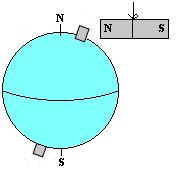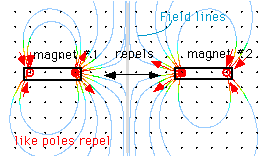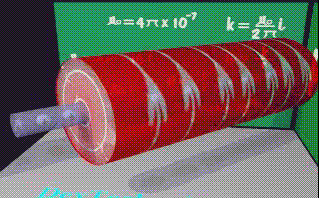
Vocabulary for Magnetism

Attract -opposite poles attract. That means they
come together. 
Repel - To drive away. Like poles repel.
Poles- All magnets have two kinds of poles. The poles are
located at the ends, on opposite faces, or along the edges of a magnet. The
poles are called north or south. They may shift location as the magnet loses
strength.
Magnetic - Materials that are attracted to magnets are called
magnetic. These magnetic materials include iron, cobalt, nickel, and some rare
metals. Non-magnetic materials include silver, gold, copper, aluminum, and lead.
Pertaining to the magnet; possessing the properties of the
magnet, or corresponding properties; as, a
magnetic bar of
iron; a magnetic needle.
Magnetic Field-
 The magnetic field (shown in red) from a wire carrying positive electric charges
towards the left. A magnetic field is simply a force between two electric
currents. Parallel currents in the same direction attract. Parallel currents in
opposite directions repel.
The magnetic field (shown in red) from a wire carrying positive electric charges
towards the left. A magnetic field is simply a force between two electric
currents. Parallel currents in the same direction attract. Parallel currents in
opposite directions repel.
Magnetic Field of a bar magnet- Go to this page for so interactive fun- http://www.walter-fendt.de/ph14e/mfbar.htm
Magnetism- force of attraction or repulsion
between various substances, especially those made of iron and certain other
metals; ultimately it is due to the motion of electric charges.
Magnetic Compass - The Chinese discovered
that a steel needle when stroked against a lodestone could attract iron too.
Around 1000 AD, the Chinese found out that by suspending a magnetized needle in
the air, the needle pointed north and south. Thus, the magnetic compass was
invented.
Compass needle - A compass needle is a magnet. The needle
usually has the north end marked, which will should tell the person holding the
compass north, south, east, west. The compass needle acts as it does because the
Earth is actually a weak, giant magnet.
Loadstone - naturally magnetic rocks.
Simple Magnets- For simple magnets, the force of magnetism works in the following way: When two magnets are brought together, the force will attract the two magnets together if the poles are opposite, that is if the pole of the first magnet is positive and the pole of the second magnet is negative. If that condition is true, the two magnets will be "forced" to stick together.